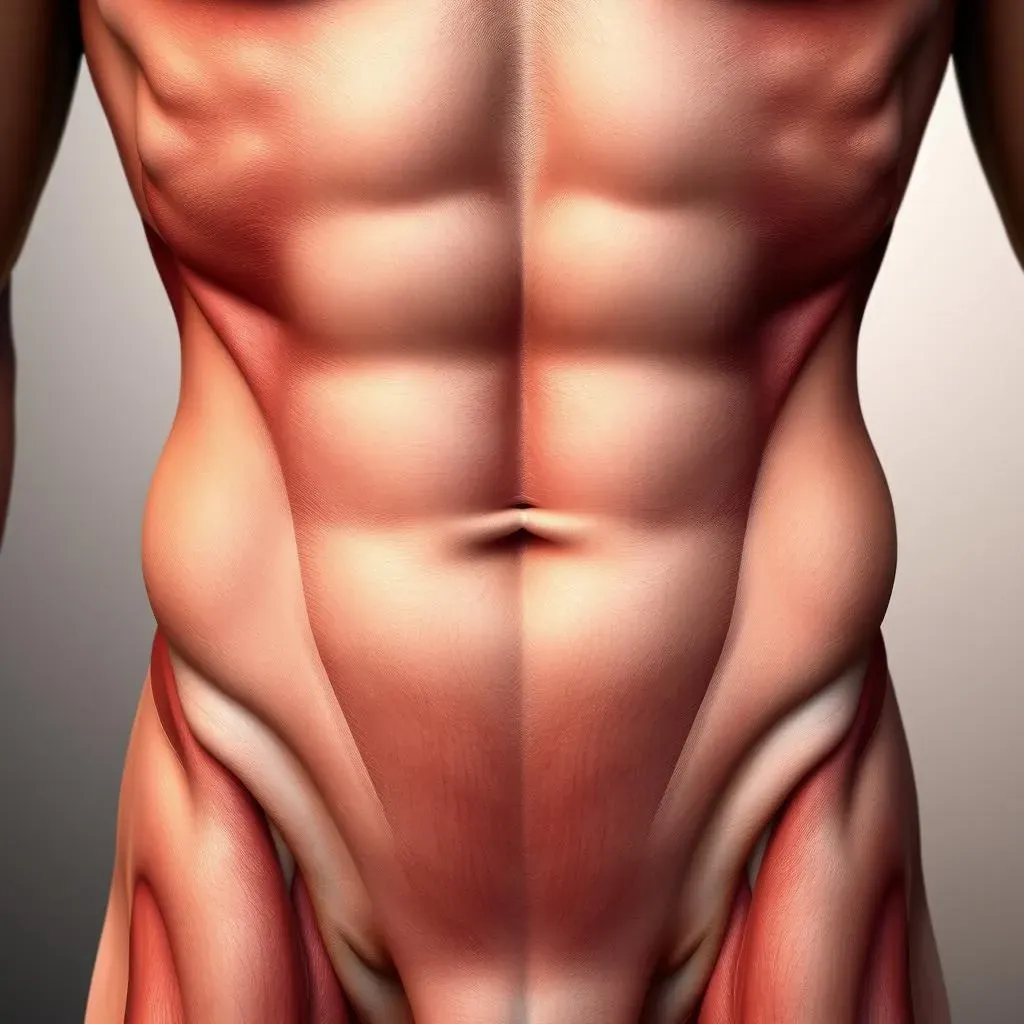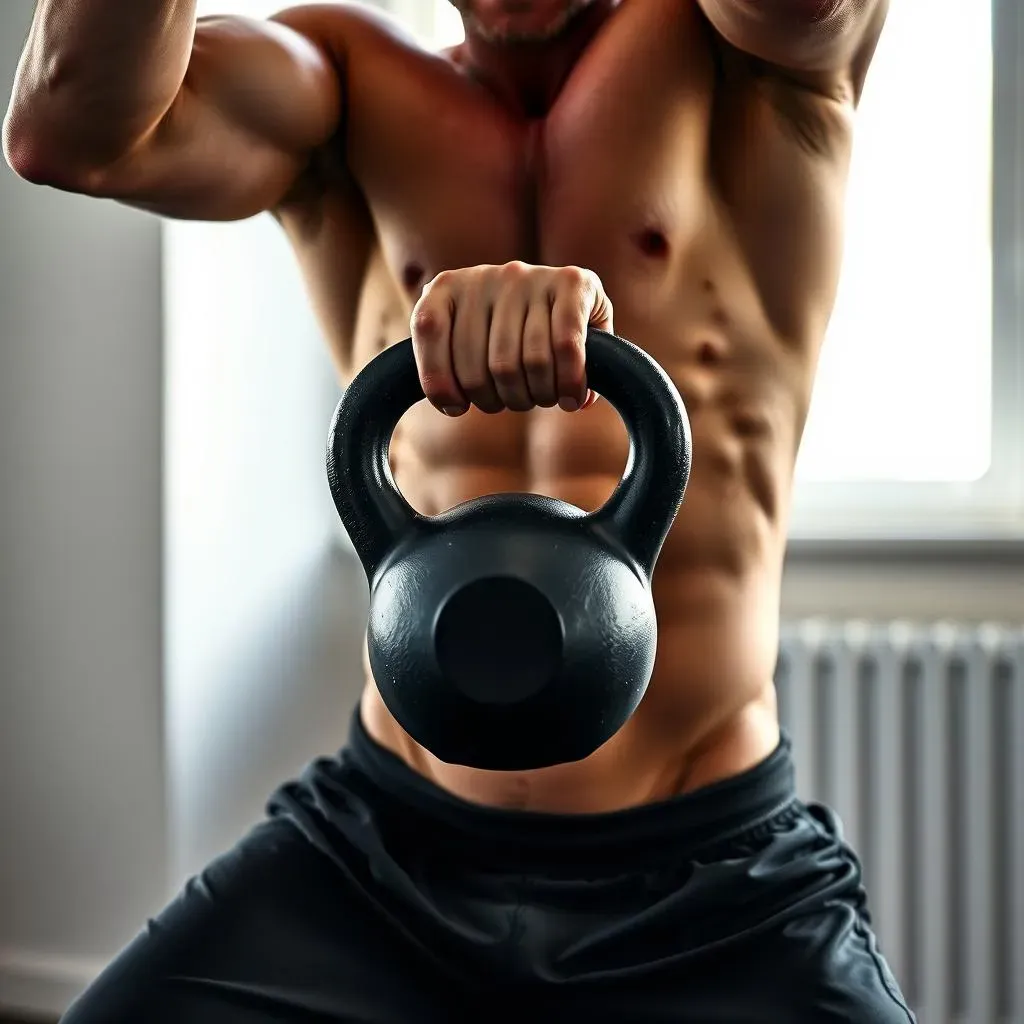Table of Contents
Are you tired of endless crunches that seem to do nothing for your core? I get it. We've all been there, chasing that elusive six-pack with boring, ineffective exercises. But what if I told you there's a better way? A way to build not just visible abs, but a truly strong and functional core? Enter the kettlebell, your new best friend for sculpting amazing abs. Forget those static planks and repetitive sit-ups. The best kettlebell workouts for abs engage your muscles in a way that traditional exercises simply can't match. We're talking about movements that challenge your core from every angle, building strength, stability, and yes, even those coveted abs. This article will guide you through nine of the most effective kettlebell exercises, explain why they work, and how to incorporate them into your fitness routine. Get ready to say goodbye to boring ab workouts and hello to a stronger, more powerful you.
Core Strength: More Than Just a SixPack

Core Strength: More Than Just a SixPack
The Misconception of "Abs"
Okay, let's be real, when most people think "core," they picture a washboard stomach, right? It's all about those six-pack abs. But here's the thing: your core is so much more than just the rectus abdominis (that's the muscle that makes up the six-pack). It's a complex network of muscles that wrap around your torso, providing stability, power, and balance. We're talking deep muscles that you can't even see, like the transverse abdominis, which acts like a natural weight belt, and the obliques, which help you twist and bend. Ignoring these crucial muscles is like building a house on a shaky foundation. You might have a pretty facade, but the whole thing will eventually crumble.
A strong core isn't just about looking good in a swimsuit; it's about being able to move through life with ease and without pain. Think about it: every movement you make, from picking up a grocery bag to swinging a golf club, involves your core. If it's weak, you're more likely to injure yourself, experience back pain, and lack power in your movements. A solid core is the key to unlocking your full athletic potential and living a healthy, active life. It's the unsung hero of your body, quietly working behind the scenes to keep you upright and moving.
Why a Strong Core Matters
So, we've established that your core is more than just "abs," but why should you care? Well, for starters, a strong core is your body's natural bodyguard against injuries. It stabilizes your spine, preventing back pain and reducing the risk of strains and sprains. It also improves your posture, making you stand taller and feel more confident. Ever notice how people with poor posture often look tired and slumped over? That's often a sign of a weak core. A strong core also enhances your athletic performance, allowing you to generate more power and move with greater agility. Whether you're a weekend warrior or a serious athlete, a strong core is the foundation for success.
Beyond the physical benefits, a strong core also improves your balance and coordination. Think of your core as the central hub of your body, connecting your upper and lower body. When it's strong, everything works together more efficiently. You'll notice better balance when you're walking, running, or even just standing still. So, ditch the idea that core work is all about aesthetics; it's about building a body that's strong, resilient, and ready for anything. That core is the real deal and it is the pillar of your body.
Benefit | Why it Matters |
|---|---|
Injury Prevention | Stabilizes spine, reduces risk of strains |
Improved Posture | Helps you stand taller and feel more confident |
Enhanced Athletic Performance | Allows for more power and agility |
Better Balance and Coordination | Improves overall body movement efficiency |
Understanding Your Abdominal Muscles

Understanding Your Abdominal Muscles
The Rectus Abdominis: The "Six-Pack" Muscle
Alright, let’s talk about the star of the show, the rectus abdominis. This is the muscle that everyone obsesses over, the one that creates the coveted six-pack. It runs vertically down the front of your abdomen, from your ribs to your pubic bone. Think of it as the muscle that helps you flex your spine, like when you do a crunch. But, and this is a big but, it's not the only muscle that matters. The rectus abdominis is like the flashy sports car – it looks great, but it needs a solid engine and chassis to really perform. And that’s where the other abdominal muscles come in.
It's important to understand that just doing endless crunches won't magically give you a six-pack if you have a layer of fat covering it. Diet is also a major factor when trying to see those abs. Also, overworking this muscle without targeting the rest can lead to imbalances and even pain. So while the rectus abdominis might be the most visible, it's crucial to train it in conjunction with the other core muscles for a truly strong and functional midsection. It is also important to remember that genetics play a big role in how visible your abs are.
The Obliques and Transverse Abdominis: The Unsung Heroes
Now, let's shift our focus to the unsung heroes of your core: the obliques and the transverse abdominis. The obliques are located on the sides of your abdomen, and they're responsible for twisting and bending movements. They're like the stabilizers that keep you from toppling over when you reach for something. There are two sets, internal and external, working together to control rotation and lateral flexion. Ignoring these guys will leave you with a core that is both weak and unstable, and you could hurt yourself in the process.
Then there's the transverse abdominis, often called the "natural weight belt." It's the deepest abdominal muscle, wrapping around your torso like a corset. This muscle is vital for core stability, protecting your spine, and helping you maintain good posture. It's the one that engages when you brace your core, and it plays a huge role in movements like lifting and pushing. Many people neglect this muscle because it's not visible, but it's one of the most important for overall core strength and function. Think of it as the foundation upon which everything else is built. Training all of these muscles will give you a complete core.
Muscle | Function | Benefit |
|---|---|---|
Rectus Abdominis | Spinal Flexion | Visible "six-pack" aesthetic |
Obliques | Rotation and Lateral Flexion | Stability and movement control |
Transverse Abdominis | Core Stabilization | Spinal protection and posture |
Best Kettlebell Workouts for Abs: 9 Exercises

Best Kettlebell Workouts for Abs: 9 Exercises
Time to Get Moving: Kettlebell Ab Exercises
Alright, enough with the theory, let's get to the good stuff! We've talked about why a strong core is important and which muscles are involved. Now, it’s time to put that knowledge into action with nine awesome kettlebell exercises. These aren't your grandma's crunches; we're talking about movements that engage your entire core, building strength and stability in ways you never thought possible. Kettlebells are fantastic because they add an element of instability, forcing your core to work even harder to control the weight. Think of it as a constant challenge for your midsection. These exercises will not only help you build a stronger core, but they'll also improve your overall fitness and athletic performance. Get ready to feel the burn!
Before we jump in, remember that proper form is crucial. It's better to start with lighter weights and focus on technique rather than trying to lift heavy right away. We want to build strength, not injuries! Also, pay attention to how your body feels. If something doesn't feel right, stop and adjust. Listen to your body, and don't be afraid to modify the exercises to fit your current fitness level. These exercises are also designed to be progressive, meaning you can increase the difficulty over time as you get stronger. So, let's grab those kettlebells and get to work!
The Exercises: Your New Core Routine
Here we go, the nine exercises that will transform your core. We're starting with the Dead Bug, a seemingly simple exercise that's incredibly effective at engaging your deep core muscles. Then we move on to the Suitcase Carry, which challenges your obliques as you walk with a kettlebell in one hand. The Goblet March is next, combining the benefits of a march with the added core engagement of holding a kettlebell. We then move to the Woodchop, a rotational exercise that targets your obliques. The Plank Row will challenge your core and upper body strength. Following is the Goblet Squat, which will engage your core while working your legs. No kettlebell routine is complete without the Kettlebell Swing, a full body exercise that is great for your core. Then we move on to the Windmill, a challenging exercise that improves core strength and flexibility. Finally, we have the Turkish Get Up, a full body exercise that will test every muscle in your body, including your core.
Each of these exercises is designed to work your core from different angles, ensuring that you're not neglecting any muscle group. Also, it's important to remember that consistency is key. Doing these exercises once a week won't cut it. Aim for at least two to three times a week, and make sure to give your body time to recover between workouts. As you get stronger, you can increase the number of repetitions, sets, or the weight you use. The goal is to always challenge yourself without overdoing it. Now, let's take a closer look at each of these exercises and how to perform them correctly. Let's get into the exercises!
Exercise | Target Muscles | Benefits |
|---|---|---|
Dead Bug | Transverse Abdominis | Deep core engagement |
Suitcase Carry | Obliques | Lateral core stability |
Goblet March | Core, hip flexors | Core strength and coordination |
Woodchop | Obliques | Rotational power |
Plank Row | Core, upper body | Core and upper body strength |
Goblet Squat | Core, legs | Core and leg strength |
Kettlebell Swing | Core, glutes, hamstrings | Full-body power and core engagement |
Windmill | Obliques, core | Core strength and flexibility |
Turkish Get Up | Full body | Overall strength, coordination, and core |
Putting It All Together: Creating Your Kettlebell Ab Routine

Putting It All Together: Creating Your Kettlebell Ab Routine
Designing Your Workout Plan
Okay, so you've got the exercises down, now how do you actually put them together into a routine? Don't worry, it's not as complicated as it sounds. First, think about how often you can realistically commit to working out. If you're just starting, aim for two to three times a week, with at least one day of rest in between. You don't need to do all nine exercises every single time. Instead, you can pick three or four exercises for each workout, focusing on different areas of your core each time. For example, one day you might focus on exercises that target the obliques, like the Woodchop and Suitcase Carry, while another day you could focus on core stability, using the Dead Bug and Plank Row. It's all about variety and making sure you're hitting all the muscles.
When it comes to reps and sets, start with what feels comfortable. If you're new to kettlebells, 8-12 reps for 2-3 sets is a good place to begin. As you get stronger, you can gradually increase the reps, sets, or the weight you're using. But, and this is important, always maintain good form. It's better to do fewer reps with proper form than more reps with sloppy technique. Also, don't be afraid to experiment with different combinations of exercises to find what works best for you. The key is to listen to your body and make adjustments as needed. This isn't a race; it's a journey, so enjoy the process. Also remember, consistency is key, and some days will be hard and some days will be easy, but the important thing is to stay consistent with your routine.
Progression and Consistency
Alright, so you've got a plan, you're working out regularly, and now what? Well, it's time to talk about progression. As you get stronger, you'll need to challenge yourself to continue to see results. This doesn't mean you have to jump to the heaviest kettlebell right away. Start by increasing the reps, then the sets, and finally the weight. Also, don't be afraid to change things up. Your body adapts quickly, so you'll want to introduce new variations of the exercises or incorporate new exercises altogether. For example, once you've mastered the regular kettlebell swing, you can try single-arm swings or variations that incorporate a squat. The goal is to keep your body guessing and prevent plateaus.
Also, remember that consistency is more important than intensity. It's better to do a shorter workout consistently than to do a long, intense workout once a week. Aim for at least 30 minutes of core work a few times a week, and listen to your body. Some days you might feel like you can push harder, and other days you might need to take it a little easier. The important thing is to show up and do the work. And most importantly, don't forget to have fun! If you're not enjoying your workouts, you're less likely to stick with them. Find ways to make your workouts engaging, whether it's listening to music, working out with a friend, or trying new exercises. Building a strong core is a marathon, not a sprint, so be patient, be consistent, and enjoy the ride.
"The only way to do great work is to love what you do." - Steve Jobs
- Start with 2-3 workouts per week
- Choose 3-4 exercises per session
- Start with 8-12 reps for 2-3 sets
- Increase reps, sets or weight as you get stronger
- Listen to your body and adjust as needed
- Stay consistent
- Have fun and enjoy the process!
Wrapping Up: Your Journey to a Stronger Core
So, there you have it—nine killer kettlebell exercises to transform your core. Remember, it's not just about the six-pack; it's about building a foundation of strength that supports your whole body. These moves, when done with proper form and consistency, will not only give you the abs you've always wanted but also improve your overall stability, power, and athletic performance. Start slow, focus on technique, and gradually increase the weight and reps as you get stronger. The best kettlebell workouts for abs are a journey, not a destination, so embrace the challenge and enjoy the process of becoming stronger every day. Now get to work!